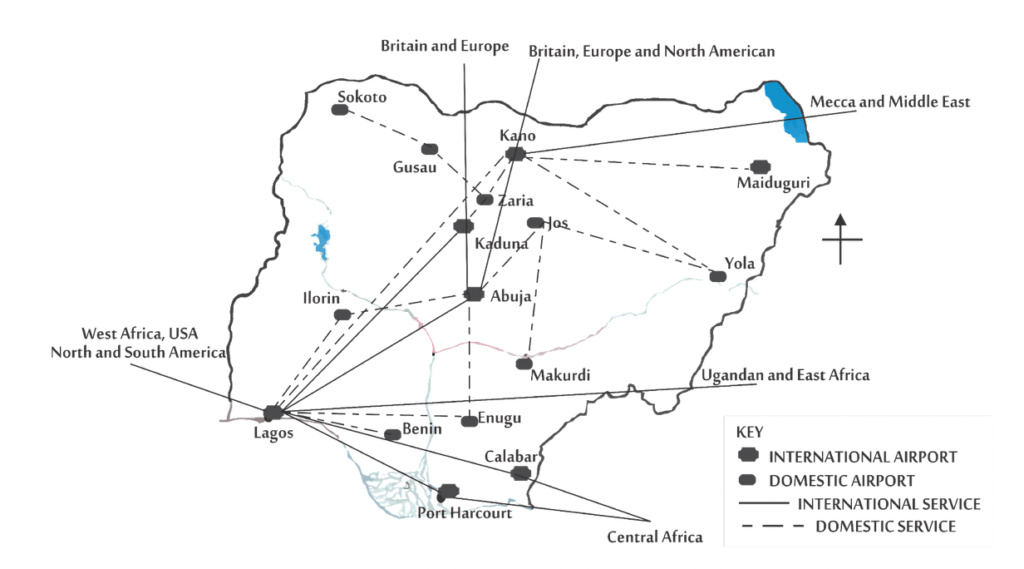The aeroplane was invented in the twentieth century and successfully launched into space in 1903 by the Wright brothers. This was a great and notable development in the transportation industry. Ever since its invention, there has been a great improvement in its size, speed, and flying distances.
Air services are of two flights; charter flights and regular flights. They operate along regular as well as fixed routes. Below are some subdivisions of such flights.
1. Internal Air Transport: They are short-distance flights which operate between important cities within a country. For instance, flights that operate between Lagos and Abuja, Port-Harcourt and Enugu etc.
2. International Flights: They are long-distance flights which operate between countries, for instance; flights between London and Lagos, Tokyo and Washington, etc. Air transport is associated with the following;
Advantages of Air Transport:
1. Air transport is very important, especially in areas that are inaccessible, where construction of roads and railways are difficult. Aircraft like helicopters are important in such areas.
2. It is the fastest means of transportation and this fact gives it an edge over others means of transportation. Those who want to avoid the stress of long journeys find the use of air transport very important.
3. Air transport is very relevant in transporting some costly as well as perishable and high-weight commodities.
4. There is relative freedom of movement in the air, although national restrictions exist. There is no congestion in the air and also no need to construct and maintain tracks in the air.
5. Air transport is important to the military unit of a country and is used as a weapon of war
Disadvantages of Air Transport:
1. The freight-bearing capacity of air transport is limited. This restricts the amount of cargo an aeroplane can carry.
2. It is usually very expensive to travel by air. This limits the opportunity of travelling by air to only those who can afford the fare.
3. Air transport is usually affected by harsh weather despite the fact that modern devices for flying are available. Such harsh weather(s) include harmattan, snowfall, fog, rainfall etc.
4. Airports these days require large space and their construction and maintenance are very expensive.
5. Some of the aircraft are large and require longer runways.
6. Although air crashes are not often recorded it happens it is usually disastrous whenever it happens.
Air Transportation in Nigeria:
It was introduced in the country during the war (1939-45) during the time; aeroplanes were used to move troops quickly. This gave rise to many airfields after the war; They were converted to civilian use.
Presently the country’s air transportation has developed in such a way that several airports have been constructed where aircraft can take off.
There are two types of services rendered, domestic and international. The domestic service involves the movement of passengers and mail across the country and makes use of all the airports in the country. See the diagram below;
There are many international airports in Nigeria such as Kano, Lagos, Ports-Harcourt, Calabar, Abuja, etc.
Examples are:
i. Muritala Mohammed International Airport (Lagos),
ii. Nnamdi Azikiwe International Airport (Abuja)
iii. Port Harcourt International Airport (Port Harcourt)
iv. Aminu Kano International Airport (Kano)

There are private airlines that operate in the country such as Air Peace, Arik Air etc. International services are involved in carrying passengers and mail to foreign countries.
We also have foreign airlines that operate in the airports such as Swiss Air, Lufthansa Air, France British Airways, etc. the aircraft in use in the international airports are bigger, better and more comfortable than those used in domestic airports, with far better services.



Responses